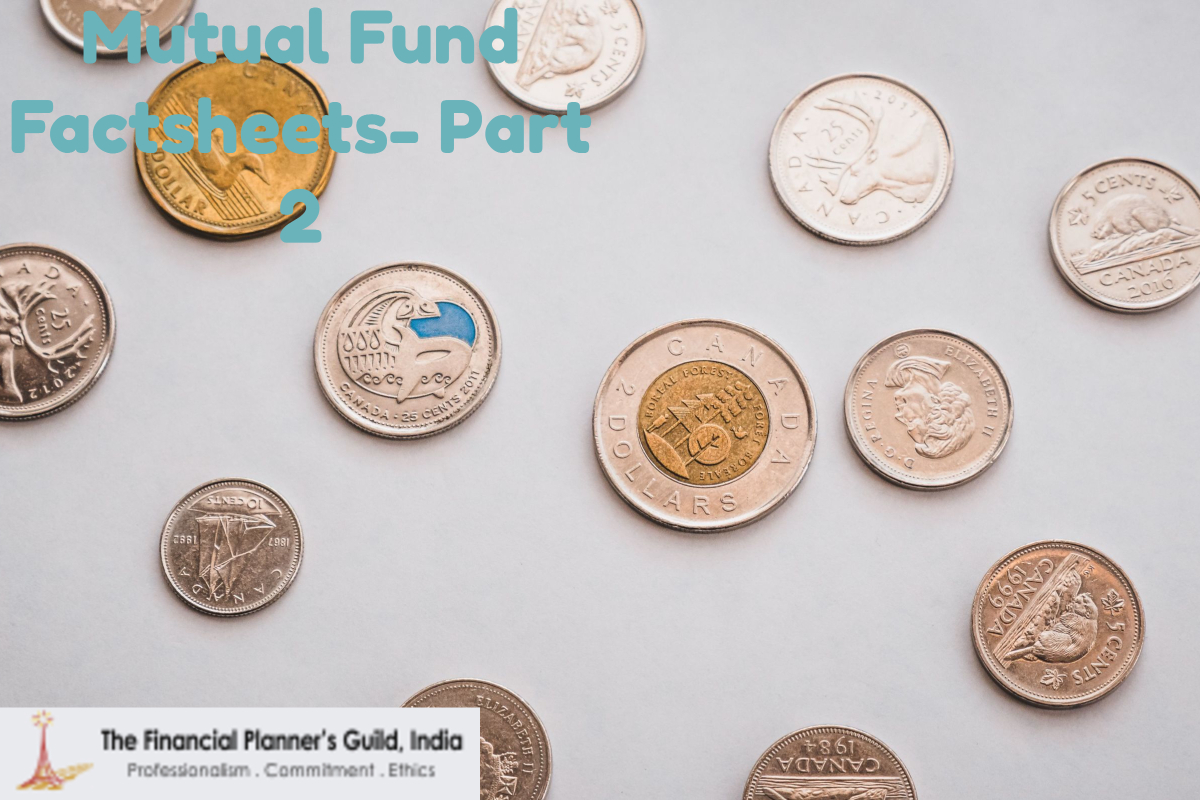
In the last article we saw the basic layout and important features in a fund factsheet. Now let us get into understanding what the volatility measures as seen in the fund factsheet mean. Please note that here we are discussing an equity scheme. The factsheet details for a debt scheme will be very different from an equity scheme. We shall see the factsheet of a debt scheme in the next and concluding part of this series.
There are usually five measures that are shown in any fund factsheet. They are standard deviation, R squared, beta, alpha and Sharpe Ratio.
Standard Deviation (SD)
This is a statistical measure of the volatility of returns from a particular asset or portfolio of assets. Suppose you say that the expected return from a fund is 10%, it is a possibility. The actual returns may be higher or lower than the stated number. Standard deviation will give you an estimate of how much can this expected return vary. A standard deviation of zero could mean a fixed rate instrument like a bank fixed deposit, where the rate remains constant, once contracted. But it could also mean that the fund is consistently losing or gaining the same amount over a long period of time. A fund which has a high standard deviation will be highly volatile. In comparing two funds, if A has a return of 10% and a SD of 25% whereas B has a return of 15% and SD of 40%, A will be considered to be less volatile and preferred by many investors. They might consider that a 5% more expectation of return is not worth the additional risk. Thus in other words, we can also say that SD measures the risk associated with investments.
Beta and R Squared
Beta shows the sensitivity of the fund to the market. It will give you an estimate of how much a fund will move up or down in relation to market movements. The beta of the index is taken as 1. If a fund has a beta of 1.1 and the market is expected to move up 10%, the fund should move up 1.1*10 i.e. 11%. Similarly if the market falls by 10%, the fund should fall by 11%. Thus a fund with a higher beta will be more volatile, but will be expected to give more returns when the market is up, but will fall more than the market when the market falls. Lower beta funds will have less volatile returns. They will not be star performers in a rising market, but will also protect fund value in a falling market. Thus if you want to invest aggressively, you should look at higher beta, whereas for safety, lower beta funds would work well. But the beta of the large cap fund needs to use the large cap index. If the fund being studied and the index are different, the beta will have no meaning. To check the reliability of the beta being used, a factor of R squared is used. This is a factor determining the correlation between the fund and the benchmark. The range of this factor is between 0-1. Usually a value of 0.8 for R squared means that the underlying beta is acceptable. A lower R squared will mean that the beta is not reliable as very little of the funds movements are correlated to the market movements. Thus beta and R squared have to be looked at together.
Alpha
It is the measure of difference between the funds actual returns and expected returns. A positive alpha would mean that the fund has performed better than expected. A negative alpha on the other hand means that the fund has performed below expectations. Here again the alpha is based on the expected returns as measured by beta. And reliability of beta can be measured by R squared. Only if the beta is reliable, the alpha will have any meaning. Alpha is also a direct measure of the performance of the fund manager.
Sharpe Ratio
Sharpe ratio represents the trade-off between risk and returns. It s measured as returns generated over risk-free returns per unit of risk. Here risk is measured by the standard deviation of the portfolio. It tells us whether the fund performance is due to excess risk taken or due smart investment decisions. Higher the Sharpe ratio, the better its risk-adjusted return performance has been. If you get negative Sharpe ratio, it means that a risk free investment (like government securities, bank deposits etc.) will be a better investment, than the one being considered. Sharpe ratio should be used in comparison with the figures for other peer group funds or with the benchmark. In isolation, it does not have meaning.
As we see there are specific parameters than can be used to gauge the performance of the funds. These are all available in the fact sheet and are carried by most mutual fund websites. It is important to see the factors in relation to the other. On a standalone basis, it will not be easy to use one figure and compare one fund against another. There are of course arguments for and against these parameters, but these are the most widely used across the industry. One needs to look at qualitative aspects of the portfolio along with these parameters to arrive at a decision on purchasing a fund. This can form a solid base from where to start your mutual fund research.
FPG India ©2024. All Rights Reserved.
Designed & Developed by W3M Technoz